MaryAnn Bernal's Blog, page 287
May 1, 2014
Mr. Chuckles is Fearless! On Walpurgisnacht - The NEW Ritual e-book series
 "Incredible! Step aside Anne Rice, Mark Barry describes places and events like you only wish you could. A nail biter, on the edge of your seat, page turner if I've ever read one. I am usually pretty good at figuring out who, what, when and where, but I was surprised time and time again. Incredibly erotic! Gruesome! Perverted, twisted and sick! Exactly as it should be! It makes no sense that this is not on the best seller list! Not a slow point in it anywhere." http://greenwizardpublishing.blogspot.co.uk/2014/04/on-walpurgisnacht-new-ritual-e-book.html?view=classic
"Incredible! Step aside Anne Rice, Mark Barry describes places and events like you only wish you could. A nail biter, on the edge of your seat, page turner if I've ever read one. I am usually pretty good at figuring out who, what, when and where, but I was surprised time and time again. Incredibly erotic! Gruesome! Perverted, twisted and sick! Exactly as it should be! It makes no sense that this is not on the best seller list! Not a slow point in it anywhere." http://greenwizardpublishing.blogspot.co.uk/2014/04/on-walpurgisnacht-new-ritual-e-book.html?view=classic

Published on May 01, 2014 07:44
The Wizard of Notts Recommends: Notts County vs Swindon Town - League One 2013/2014
Published on May 01, 2014 07:08
April 30, 2014
History Trivia - Roman emperor Licinius unifies the entire Eastern Roman Empire
April 30
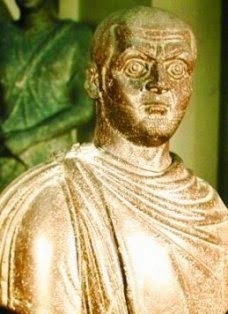
311 Emperor Galerius legal recognition of Christians in the Roman Empire.
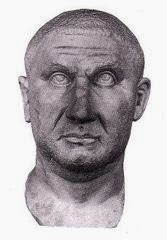
313 Roman emperor Licinius unified the entire Eastern Roman Empire under his rule.
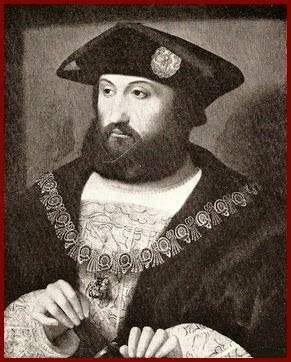
1513 Edmund de la Pole, Yorkist pretender to the English throne, was executed on the orders of Henry VIII.
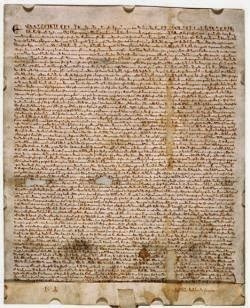
1527 Henry VIII of England and King Francis of France signed the treaty of Westminster.


311 Emperor Galerius legal recognition of Christians in the Roman Empire.

313 Roman emperor Licinius unified the entire Eastern Roman Empire under his rule.

1513 Edmund de la Pole, Yorkist pretender to the English throne, was executed on the orders of Henry VIII.

1527 Henry VIII of England and King Francis of France signed the treaty of Westminster.

Published on April 30, 2014 04:16
April 29, 2014
History Trivia - Hugh of Cluny dies
April 29
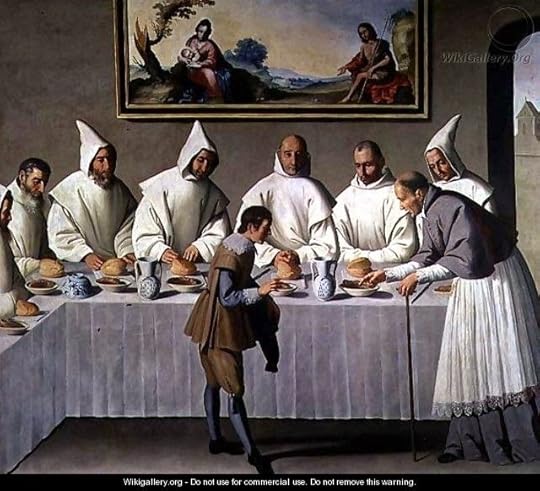
1109 Hugh of Cluny died. Hugh was the driving force in bringing the monastery of Cluny to preeminence in medieval France.
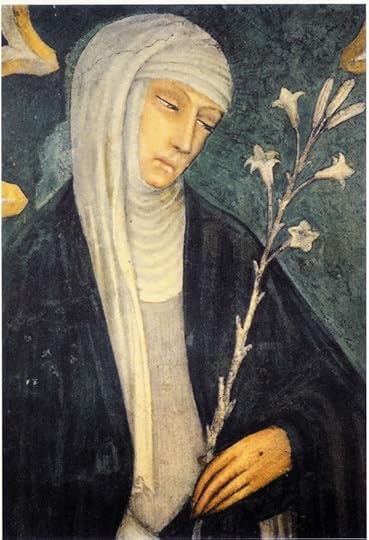
1347 Catherine of Siena was born. Catherine, the patron saint of Italy, played a significant role in returning the Papacy from Avignon to Rome. She was declared a Doctor of the Church in 1970.
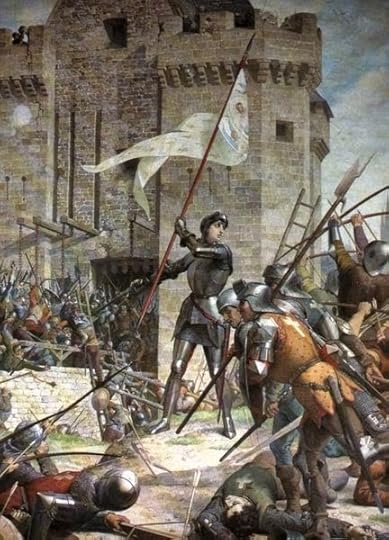
1429 Joan of Arc led French forces to victory over English at Orleans.


1109 Hugh of Cluny died. Hugh was the driving force in bringing the monastery of Cluny to preeminence in medieval France.

1347 Catherine of Siena was born. Catherine, the patron saint of Italy, played a significant role in returning the Papacy from Avignon to Rome. She was declared a Doctor of the Church in 1970.

1429 Joan of Arc led French forces to victory over English at Orleans.

Published on April 29, 2014 03:22
April 28, 2014
History Trivia - emperor Constantius II visits Rome
April 28
My brother in law died Thursday funeral Tuesday flying today to Pennsylvania back on Wednesday he would have been 69 next month he had COPD and was on oxygen 24/7 for over a year. Hope all is well with you :)
Sent from my iPhone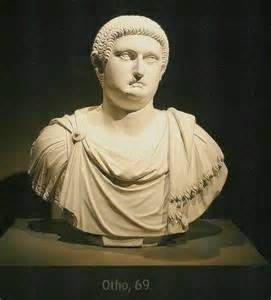
32 Emperor Otho (second emperor of the Year of the Four Emperors) was born. His reign lasted three months - January 15 - April 16, 69.
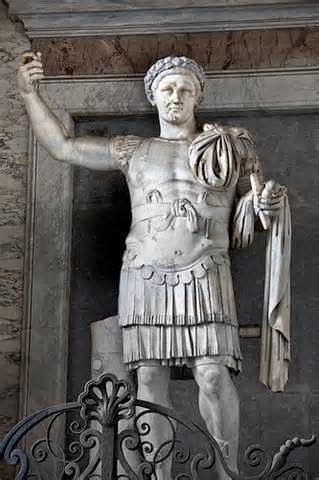
357 Emperor Constantius II, after dealing with the Franks, visited Rome before moving his army north to campaign against the Sarmatians, Suevi and the Quadi along the Danube. Constantius spent most of his reign quelling uprisings throughout the Roman Empire, succumbing to a fever in the winter of 361 at Mopsucrene (central Turkey).
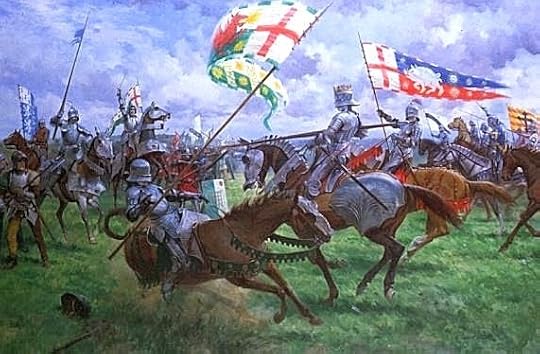
442 King Edward IV of England was born. The first half of his rule was marred by the violence associated with the Wars of the Roses, but he overcame the Lancastrian challenge to this throne at Tewkesbury in 1471 to reign in peace until his sudden death.

My brother in law died Thursday funeral Tuesday flying today to Pennsylvania back on Wednesday he would have been 69 next month he had COPD and was on oxygen 24/7 for over a year. Hope all is well with you :)
Sent from my iPhone

32 Emperor Otho (second emperor of the Year of the Four Emperors) was born. His reign lasted three months - January 15 - April 16, 69.

357 Emperor Constantius II, after dealing with the Franks, visited Rome before moving his army north to campaign against the Sarmatians, Suevi and the Quadi along the Danube. Constantius spent most of his reign quelling uprisings throughout the Roman Empire, succumbing to a fever in the winter of 361 at Mopsucrene (central Turkey).

442 King Edward IV of England was born. The first half of his rule was marred by the violence associated with the Wars of the Roses, but he overcame the Lancastrian challenge to this throne at Tewkesbury in 1471 to reign in peace until his sudden death.

Published on April 28, 2014 03:41
April 27, 2014
History Trivia - Battle of Dunbar - Scots defeated
April 27
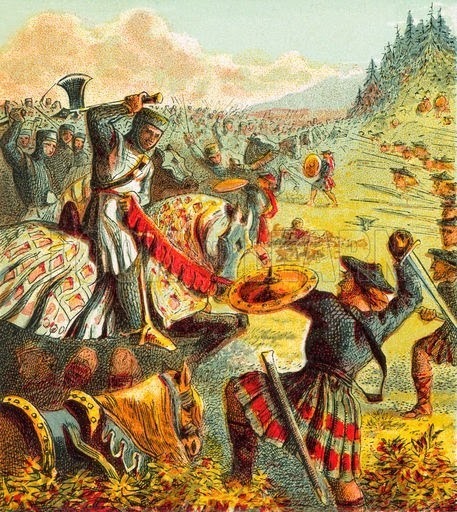
1124 David I became King of Scots. 1296 Battle of Dunbar: The Scots were defeated by Edward I of England. This battle was the only significant field action in the campaign of 1296 when King Edward I of England had invaded Scotland to punish King John Balliol for his refusal to support English military action in France.


1124 David I became King of Scots. 1296 Battle of Dunbar: The Scots were defeated by Edward I of England. This battle was the only significant field action in the campaign of 1296 when King Edward I of England had invaded Scotland to punish King John Balliol for his refusal to support English military action in France.

Published on April 27, 2014 02:50
April 26, 2014
Ancient Chisel Used to Build Western Wall Found
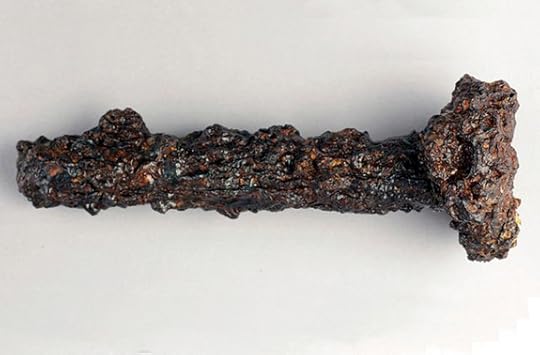 Rossella Lorenzi, Discovery News A 2,000-year-old stonemason’s chisel that may have been used in the construction of Jerusalem’s Western Wall has been unearthed at the bottom of the structure along with a number of Second Temple-era objects, claims an Israeili archaeologist.Some of the artifacts, which include a Roman sword, cooking vessels, a gold bell, coins and a ceramic seal, would suggest the Western Wall, a holy site for both Muslims and Jews, had not been built by King Herod at all.
Rossella Lorenzi, Discovery News A 2,000-year-old stonemason’s chisel that may have been used in the construction of Jerusalem’s Western Wall has been unearthed at the bottom of the structure along with a number of Second Temple-era objects, claims an Israeili archaeologist.Some of the artifacts, which include a Roman sword, cooking vessels, a gold bell, coins and a ceramic seal, would suggest the Western Wall, a holy site for both Muslims and Jews, had not been built by King Herod at all.Eli Shukron, an archaeologist working for the Israel Antiquities Authority (IAA), found the chisel last summer during a dig near a tunnel at the lower base of the Western Wall.
Also known as the Wailing Wall, the massive structure is venerated by Jews as the sole remnant of their Second Temple, destroyed by the Romans in 70 A.D. To the Muslims, the Western Wall is revered as the Wall of Buraq, the place where Muhammad tethered his winged horse Buraq after being transported from Mecca to Jerusalem.
Shukron, who has been working in the area with archaeologist Ronny Reich of the University of Haifa for the past 19 years, believes the chisel fell from a stonemason’s hand as he was working on scaffolding in the higher sections of the wall. The builder did not bother to get down and retrieve it.
“The chisel was found inside rubble of stone chips that fell from the stonemasons working on the rocks comprising the Western Wall,” Shukron told Israel’s daily Haaretz.
Evidence of 2000-Year-Old Famine Found in Jerusalem
About 6 inches long, the metal tool features a flattened head, as a result of being repeatedly banged on rock.
“People pray and kiss these holy stones every day, but somebody carved them, somebody chiseled them, somebody positioned them,” Shukron was reported as saying.
“They were workers, human beings, who had tools. Today for the first time we can touch a chisel that belonged to one of them,” he added.
According to Haaretz, the IAA has not yet confirmed the finding, but Shukron trusts his findings.
“I have no doubt that it belongs to the time the Wall was built,” he said.
“We found it at the base of the Western Wall, about six meters (19.68 feet) below the main street of Jerusalem in the era of the Second Temple,” he added.
Ancient Rural Town Uncovered in Israel
Commonly believed to have been part of King Herod’s massive expansion project on the Temple Mount, which included the Second Temple itself, the Western Wall may have not been built by the Bible’s bloodiest tyrant after all.
According to Shukron, the excavation revealed a number of coins beneath the wall which date decades after Herod’s death.
This would suggest that construction of the Western Wall had not even begun at the time of Herod’s death and was likely completed only generations later by one of his descendants.
The IAA said it would not comment on the discovery until analysis on the chisel and other findings were completed.
http://www.livescience.com/45118-ancient-chisel-used-to-build-western-wall-found.html

Published on April 26, 2014 06:39
Humans May Have Dispersed Out of Africa Earlier Than Thought
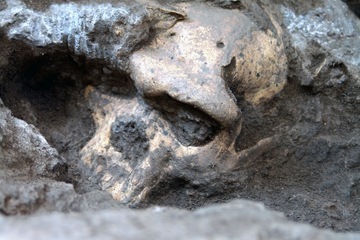 By Charles Q. Choi, Live Science Contributor Modern humans may have dispersed in more than one wave of migration out of Africa, and they may have done so earlier than scientists had long thought, researchers now say. Modern humans first arose between 100,000 and 200,000 years ago in Africa. But when and how the modern human lineage then dispersed out of Africa has long been controversial. Scientists have suggested the exodus from Africa started between 40,000 and 70,000 years ago. However, stone artifacts dating to at least 100,000 years ago that were recently uncovered in the Arabian Desert suggested that modern humans might have begun their march across the globe earlier than once suspected. Out of Africa modelsTo help solve this mystery, Katerina Harvati, a paleoanthropologist at the University of Tübingen in Germany, and her colleagues tested four competing out-of-Africa models. Two models involved a single dispersal — one involved a route northward, up the Nile River valley and then eastward across the northern end of the Arabian Peninsula into Asia; the other involved a "beachcomber" route along the southern coast of the Arabian Peninsula into Asia. Two other models involved multiple dispersals, with both models involving routes along the northern and southern ends of the Arabian Peninsula — one involved connections and gene flow between these routes, and the other did not. [See Photos of Our Closest Human Ancestor]
By Charles Q. Choi, Live Science Contributor Modern humans may have dispersed in more than one wave of migration out of Africa, and they may have done so earlier than scientists had long thought, researchers now say. Modern humans first arose between 100,000 and 200,000 years ago in Africa. But when and how the modern human lineage then dispersed out of Africa has long been controversial. Scientists have suggested the exodus from Africa started between 40,000 and 70,000 years ago. However, stone artifacts dating to at least 100,000 years ago that were recently uncovered in the Arabian Desert suggested that modern humans might have begun their march across the globe earlier than once suspected. Out of Africa modelsTo help solve this mystery, Katerina Harvati, a paleoanthropologist at the University of Tübingen in Germany, and her colleagues tested four competing out-of-Africa models. Two models involved a single dispersal — one involved a route northward, up the Nile River valley and then eastward across the northern end of the Arabian Peninsula into Asia; the other involved a "beachcomber" route along the southern coast of the Arabian Peninsula into Asia. Two other models involved multiple dispersals, with both models involving routes along the northern and southern ends of the Arabian Peninsula — one involved connections and gene flow between these routes, and the other did not. [See Photos of Our Closest Human Ancestor]The investigators used these models to predict how much the genes and skull measurements of different groups in Africa, Asia and Australia might have diverged from one another given how separated they were by space and time. Then, the researchers compared these predictions with actual gene and skull data from 10 African, Asian and Australian human populations.
The researchers found that both the genetic and skull data supported a multiple-dispersal model involving several migrations.
"It is really exciting that our results point to the possibility of a multiple-dispersals model of modern humans out of Africa," Harvati said. "A multiple-dispersals scenario, with earlier modern humans leaving Africa as early as 130,000 before present, can perhaps account for part of the morphological and genetic patterns that we see among modern human populations."
The first wave of migrations probably followed the southern coast of the Arabian Peninsula as early as 130,000 years ago to Australia and the west Pacific region, while the second wave traveled along the northern route about 50,000 years ago, the researchers said. These waves of migration appear relatively isolated from each other.
"Australian Aborigines, Papuans and Melanesians were relatively isolated after the early dispersal along the southern route," study lead author Hugo Reyes-Centeno, of the University of Tübingen, said in a statement. Other Asian populations apparently descended from members of the later northern wave of migration, the researchers said.
The delay between these waves of migration could be due to ancient environmental factors, "specifically climatic conditions that might have impeded the crossing of the Arabian Peninsula, such as desert conditions," Harvati said.
Ancient environmental factors might not only have prevented migrations, but also spurred them, Havarti said.
"For example, the documentation of severe droughts throughout eastern Africa between about 75,000 to 135,000 years ago could have encouraged a dispersal into other parts of Africa as well as outside of the continent," Harvati said. "More favorable conditions within Africa could have limited migrations out of the continent between 75,000 to 50,000 years ago."
Effects of interbreeding
The researchers cautioned that interbreeding between modern humans and other lineages of humans might influence the results of this new study. For example, instances of interbreeding with the now-extinct Denisovan lineage might have introduced ancient genes into certain modern human groups, perhaps making them look as if they left Africa earlier than they actually did. [Denisovan Gallery: Tracing the Genetics of Human Ancestors]
"Our study did not specifically test for hybridization with archaic humans, and, of course, it is possible that such admixture could contribute to our results," Harvati said. "We feel, however, that the very low levels of admixture that have been proposed are not sufficient to drive our findings."
The researchers said continued fieldwork and genetic advancements might help confirm this model of multiple, relatively isolated waves of migration.
"The story of human evolution tends to be simplified," Harvati said. "However, more complex models, such as multiple dispersals versus a single dispersal out of Africa, gain strength as more data and new methods become available."
"Further fieldwork in the region of the southern route — for example, the Arabian Peninsula, southeast Asia, Melanesia — is essential in order to further understand the timing and route of early modern human dispersals," Harvati said. "Of course, this is a vast geographical space that has been largely understudied, but it is crucial in developing our knowledge of the first Eurasians."
http://www.livescience.com/44988-humans-dispersed-earlier-than-thought.html

Published on April 26, 2014 06:33
Blood in Gourd Didn't Belong to Louis XVI, New DNA Study Finds
By Megan Gannon, News Editor[image error] [image error] 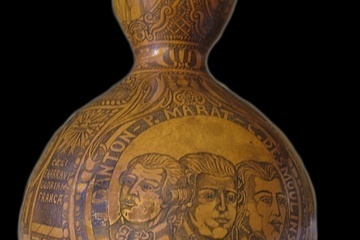
 A gourd emblazoned with heroes of the French Revolution said to contain the blood of Louis XVI.
A gourd emblazoned with heroes of the French Revolution said to contain the blood of Louis XVI.
Credit: Davide Pettener View full size image New genetic evidence casts further doubt on the authenticity of a grisly French relic: a gourd long believed to be stained with the blood of Louis XVI.
Scientists sequenced the genome from dried blood inside the 200-year-old gourd and found that it didn't match with the DNA signatures of the king's ancestry, nor did it seem to carry the code for Louis XVI's celebrated traits, like his imposing height and blue eyes.
Deposed during the French Revolution, Louis XVI was executed by guillotine in January 1793, months before his wife, Marie Antoinette, fell victim to the Reign of Terror, too. According to legend, witnesses soaked up the king's blood with handkerchiefs after his beheading. An inscription on the elaborately decorated gourd claims the vessel held one of those bloody cloths. [See Photos of Louis XVI's Embalmed Head & Gourd]
Last year, a group of scientists compared the DNA signatures from blood found in the gourd with the DNA of three modern male relatives of Louis XVI from different branches of the Bourbon line. The Y chromosomes from the three men matched one another, but not the blood. This revelation, published in the European Journal of Human Genetics, sparked a new investigation.
"When the Y chromosome of three living Bourbons was decoded, and we saw that it did not match with the DNA recovered from the pumpkin in 2010, we decided to sequence the complete genome and to make a functional interpretation in order to see if the blood could actually belong to Louis XVI," Carles Lalueza-Fox, of the Spanish National Research Council (CSIC), said in a statement.
Based on their newly sequenced genome, Lalueza-Fox and colleagues think whomever the blood in the gourd belonged to didn't look like Louis XVI in terms of physical appearance or genealogical heritage.
Louis XVI was known for his towering stature; he may have stood over 6 feet (185 centimeters) tall. Though scientists do not entirely understand the genetic basis for height, Lalueza-Fox and colleagues wrote that the genome pieced together from the gourd blood was not consistent with that of a very tall person, but rather better matched someone with only slightly above-average height for the day. The king also had blue eyes, while the person who left their blood on the gourd more likely had brown eyes, the researchers say.
What's more, the genome had some markers of northern Italian heritage. This finding "cannot be easily reconciled with the known Louis XVI family history, given that just one in 16 great-great-grandparents — Victor Amadeus II, Duque of Savoy (1666–1732) — has some possible northern Italian ancestry," the researchers wrote.
http://www.livescience.com/45103-blood-louis-xvi-gourd-genome.html


 A gourd emblazoned with heroes of the French Revolution said to contain the blood of Louis XVI.
A gourd emblazoned with heroes of the French Revolution said to contain the blood of Louis XVI.Credit: Davide Pettener View full size image New genetic evidence casts further doubt on the authenticity of a grisly French relic: a gourd long believed to be stained with the blood of Louis XVI.
Scientists sequenced the genome from dried blood inside the 200-year-old gourd and found that it didn't match with the DNA signatures of the king's ancestry, nor did it seem to carry the code for Louis XVI's celebrated traits, like his imposing height and blue eyes.
Deposed during the French Revolution, Louis XVI was executed by guillotine in January 1793, months before his wife, Marie Antoinette, fell victim to the Reign of Terror, too. According to legend, witnesses soaked up the king's blood with handkerchiefs after his beheading. An inscription on the elaborately decorated gourd claims the vessel held one of those bloody cloths. [See Photos of Louis XVI's Embalmed Head & Gourd]
Last year, a group of scientists compared the DNA signatures from blood found in the gourd with the DNA of three modern male relatives of Louis XVI from different branches of the Bourbon line. The Y chromosomes from the three men matched one another, but not the blood. This revelation, published in the European Journal of Human Genetics, sparked a new investigation.
"When the Y chromosome of three living Bourbons was decoded, and we saw that it did not match with the DNA recovered from the pumpkin in 2010, we decided to sequence the complete genome and to make a functional interpretation in order to see if the blood could actually belong to Louis XVI," Carles Lalueza-Fox, of the Spanish National Research Council (CSIC), said in a statement.
Based on their newly sequenced genome, Lalueza-Fox and colleagues think whomever the blood in the gourd belonged to didn't look like Louis XVI in terms of physical appearance or genealogical heritage.
Louis XVI was known for his towering stature; he may have stood over 6 feet (185 centimeters) tall. Though scientists do not entirely understand the genetic basis for height, Lalueza-Fox and colleagues wrote that the genome pieced together from the gourd blood was not consistent with that of a very tall person, but rather better matched someone with only slightly above-average height for the day. The king also had blue eyes, while the person who left their blood on the gourd more likely had brown eyes, the researchers say.
What's more, the genome had some markers of northern Italian heritage. This finding "cannot be easily reconciled with the known Louis XVI family history, given that just one in 16 great-great-grandparents — Victor Amadeus II, Duque of Savoy (1666–1732) — has some possible northern Italian ancestry," the researchers wrote.
http://www.livescience.com/45103-blood-louis-xvi-gourd-genome.html

Published on April 26, 2014 06:22
1800's Shipwreck Rediscovered Near Golden Gate Bridge
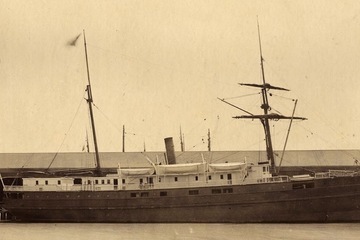
 City of Chester, a passenger steamer that sank near San Francisco in 1888.
City of Chester, a passenger steamer that sank near San Francisco in 1888.Credit: San Francisco Maritime National Historic Park K01.2.571PLBy Stephanie Pappas, Senior Writer
The lost shipwreck of a passenger steamer that went down near the Golden Gate in San Francisco has been rediscovered.
The National Oceanic and Atmospheric Administration (NOAA), announced the discovery of the remains of the SS City of Chester today (April 23). NOAA's Coast Survey Navigational Response Team 6 discovered the wreck last year during a sonar survey of the San Francisco Bay.
The City of Chester was built in 1875 and sank in 1888. Carrying 90 passengers, the ship was steaming away from San Francisco toward Eureka, Calif., on Aug. 22 of that year. The fog that day was dense.
Only a few minutes into the voyage, around 10 a.m., the City of Chester was traveling through the Golden Gate, the entrance to San Francisco Bay that is now spanned by the Golden Gate Bridge. The ship was struck by the Oceanic, another ship arriving at the harbor from Asia. [Shipwrecks Gallery: Secrets of the Deep]
Abandoned ship
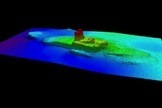 [image error]
[image error]
 A 2013 sonar survey of the City of Chester wreck shows the ship sitting upright on the ocean floor.
A 2013 sonar survey of the City of Chester wreck shows the ship sitting upright on the ocean floor.Credit: NOAA Office of Coast Survey NRT6View full size imageThe City of Chester lasted only six minutes before the ship sunk, according to NOAA. Sixteen people died in the wreck, and the public initially raised a racially charged outcry against the Asian immigrants on the Oceanic. Stories of those passengers' heroism in saving victims on the City of Chester soon dampened those cries, however.
The wreck's location in the aftermath of the sinking was no mystery, said James Delgado, the director of maritime heritage for NOAA's Office of National Marine Sanctuaries. In 1888, the now-defunct U.S. Coast and Geodetic Survey dragged a wire behind a tugboat and snagged the hull of what they believed to be the City of Chester. Salvage diver Capt. Robert Whitelaw also claimed to have sent a diver to the shipwreck in 1890. Whitelaw reported that the ship was cut nearly in two by the Oceanic's blow.
The diver "said there were bodies in the wreck, and it spooked him and he didn't want to go back," Delgado told Live Science.
But over the years, the wreck was largely forgotten, except as a footnote as the second-deadliest maritime disaster at the Golden Gate. In May 2013, NOAA's Coast Survey team was conducting a sonar survey in preparation for the America's Cup yacht race, Delgado said. He asked the team to venture into the area where the City of Chester might have gone down.
Fortuitous find
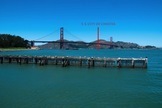 [image error]
[image error]
 A modern view of the Golden Gate and the City of Chester's approximate location.
A modern view of the Golden Gate and the City of Chester's approximate location.Credit: Robert V. Schwemmer, NOAA National Marine SanctuariesView full size imageThe team was able to find the ship, "zoom in" with sonar and survey it. The survey revealed 202-foot-long (62 meters) City of Chester sitting upright at the edge of a shoal in 216 feet (66 m) of water, "shrouded in mud," Delgado said.
The hull rises 18 feet (5.5 m) from the ocean floor, and high-resolution sonar even located the gash from the collision on the port side of the ship, NOAA reported.
The discovery highlights the use of science and technology in ocean exploration, Delgado said, adding that he hopes the mission inspires young people to study science.
"Not only are we boldly going and finding new life [in the oceans]," he said, "we're finding evidence of past civilization."
There are no plans to raise the wreck, and the strong currents and murkey water at the Golden Gate make diving to the wreck a dangerous proposition, Delgado said. NOAA intends to create an exhibit about the ship at the office of the Gulf of Farallones National Marine Sanctuary at Crissy Field in San Francisco and will also work with Google Oceans to put information about the wreck online, Delgado said.
http://www.livescience.com/45068-san-francisco-shipwreck-rediscovered.html

Published on April 26, 2014 06:15




